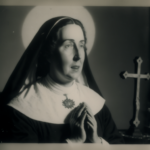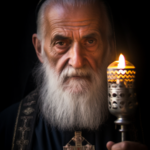St. Canute IV
St. Canute IV
When he lived: St. Canute IV, also known as King Canute the Holy, lived from around 1042 to 1086.
Where he lived: He lived primarily in Denmark, where he ruled as the King.
Notable World Events During His Time
- Norman Conquest (1066): In 1066, William the Conqueror, Duke of Normandy, successfully invaded England, leading to the famous Battle of Hastings. This event reshaped the political landscape of England and had significant implications for the rest of Europe.
- Investiture Controversy: During Canute’s reign, the Investiture Controversy was ongoing. This conflict between the Pope and the Holy Roman Emperor over the right to appoint bishops and other church officials had a significant impact on the power dynamics between church and state.
- Great Schism (1054): The Great Schism marked the official split between the Eastern Orthodox Church and the Roman Catholic Church. This event had lasting effects on the religious and cultural development of Europe and the Byzantine Empire.
- 1066 Almoravid invasion of the Iberian Peninsula: The Almoravids, a North African Berber dynasty, invaded the Iberian Peninsula, leading to conflicts between Muslim and Christian forces in the region.
- Lunar Eclipse of 1052: An astronomical event such as a lunar eclipse would have been notable during Canute’s time, showing advancements in understanding the cosmos.
- Birth of Omar Khayyam (1048): The renowned Persian mathematician, astronomer, and poet Omar Khayyam was born during Canute’s lifetime, contributing to the world of mathematics and literature.
Patronage: St. Canute IV is the patron saint of Denmark, as well as of brewers, kings, and the National Cathedral of Denmark in Roskilde. He is known for his piety, charity, and dedication to the Christian faith, which led to his eventual martyrdom.
His Works
St. Canute’s first notable actions were when he was a member of Sweyn’s Raid of England, which occurred in 1069. He is also reported to have been one of the leaders of another raid on England that happened in 1075.
As a king, St. Canute proved to be someone who was highly ambitious and also a very devoted person. This was clear in how he acknowledged the church’s authority and demanded strict observation of church holidays.
St. Canute was a zealous propagator of the faith of Christ; he was pious, and he was also charitable to the poor. He was assiduous in prayer and contemplation.
St. Canute was also known for giving generous gifts to the churches in Odense, Roskide, Viborg, Dalby, and Lund. He also enforced the collection of tithes. This strong devotion to the church resulted in the church becoming his strong ally and supporting his position in power.
At some point in 1085, St. Canute granted the Lund Cathedral large tracts of land in Scania, Zealand, and Amager. The clerics at Lund were given the prerogatives of the land, enabling them to tax the peasantry there.
Despite all this, he still retained his right to pardon the outlaws, impose fines, and demand transportation for his retinue.
Throughout his reign, he attempted to increase the royal power in Denmark by stifling the nobles. He assigned to himself ownership of common lands, the right to goods from shipwrecks, and the right to inherit the possessions of foreigners and those with whom he had no relations.
His policies to strengthen his powers led to discontent amongst his subjects, as they were not accustomed to such a kind of leadership.
His Ambitions
St. Canute’s ambitions were not only for Denmark; he also wished to extend beyond borders. He took it that the crown of England was rightfully his since he was a grandnephew to Canute the Great, who was the ruler of England, Denmark, and Norway until 1035.
In 1085, with the support of his father-in-law, Count Robert, and Olaf III of Norway, he planned to invade England and called his fleet at Limfjord. However, the fleet never set sail as St. Canute became occupied by the potential threat from Henry IV, who was the Holy Roman Emperor. Canute had the fear that Henry would invade Denmark, as Henry’s enemy Rudolf of Rheinfelden had sought refuge in Denmark.
The warriors who made up the fleet got weary of waiting for him as they wanted to return home for the harvest season. They then decided to elect Olaf, who was Canute’s brother, to argue their case. This did not sit well with St. Canute, and he arrested Olaf.
The End of His Reign
In early 1086, a revolt broke out among the peasants against him in Vendsyssel, where Canute was staying. He then fled to Schleswig and then to Odense.
On the 10th of July that same year, Canute and his men took refuge in the wooden St. Alban’s Priory in Odense. However, the rebels stormed into that church and killed Canute and his brother Benedict, as well as seventeen of their followers. Based on the results of his CT scan that was done in 2008, it is likely that he faced his death without any struggle.
After his death, St. Canute was succeeded by his brother Olaf as Olaf I of Denmark.
The reason for the uprising that resulted in his death is unknown, but others argue that it had something to do with the fleet of peasants that he was supposed to go with to the invasion of England.
Legacy
St. Canute is also the founder of the Lund Cathedral School, and he is known as the patron saint of Denmark.
Because of his advocacy for the church and his martyrdom, he quickly became considered a saint. He was canonized in 1101.
July 10 is recognized by the Catholics as his feast day.
The St. Canute Cathedral was built in his name, and his remains and his brother Benedict’s remains were entered there, and their remains are on display there.
Canute’s abortive invasion of England marked the end of the Viking Age.
Controversy
There are different interpretations of St. Canute’s rulership, with some considering him a violent king who tyrannized his subjects and others considering him a strict but fair ruler who supported the Roman Catholic Church.
He was never a thoroughly popular saint in Denmark, but when he was canonized, it gave the Danish monarchy a sense of divine legitimacy.
5 Interesting Facts About St. Canute IV
- St. Canute went into exile in Sweden when his brother became the
King, as he actively opposed him. - St. Canute was the first Dane to be canonized.
- After the peasants dispersed when they did not go through with
their plan to invade England, St. Canute planned to carry out the
invasion the following year. - He died following a lance thrust to the flank.
- When Olaf was king, Denmark suffered crop failure, and this was
seen as divine retribution for the killing of Canute.
Prayer to St. Canute IV
Heavenly King, we pray that, like St. Canute, we will be willing to offer up all that we have to You so that we may spend eternity in Your royal court in Heaven. Amen.



